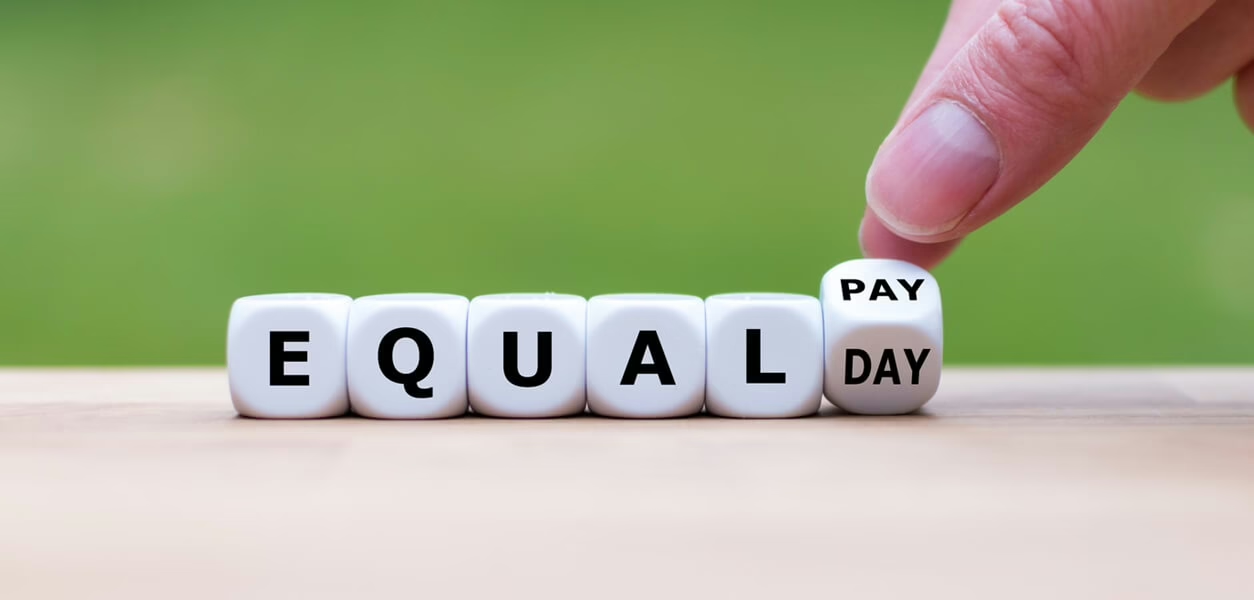
Retirement isn’t always a full stop to earning income. Plenty of older Australians keep working — some for financial reasons, others for social connection, personal fulfilment, or simply because they enjoy it.
But how does paid work affect the Age Pension? That’s where things can get confusing. The current system is often criticised for being complex and, at times, discouraging older people from staying in the workforce.
Government reports have recognised both the opportunities and the barriers to this employment. The 2023 Intergenerational Report highlights that older Australians are healthier, living longer, and increasingly participating in paid work. Meanwhile, the 2021 Retirement Income Review acknowledged that the complexity of Age Pension settings and frequent policy changes can create uncertainty and erode confidence in working and contributing to the superannuation system.
Advocates such as the Actuaries Institute and National Seniors Australia have called for simpler rules — or even a universal pension. But if and until that happens, it’s worth understanding how the system currently works, especially if you’re considering earning some extra income.
The Work Bonus: helping you keep more of what you earn
The Work Bonus is a key support for Age Pensioners who want to keep working.
It allows you to earn income from employment or self-employment without it immediately reducing your fortnightly Age Pension payments.
Here’s how it works:
- The first $300 per fortnight of employment income that you report is excluded from the Income Test.
- If you earn less than $300 in a fortnight, the unused amount builds up in your Work Bonus balance (up to a maximum of $7,800).
- From 1 July 2023, new Age Pension recipients receive an extra one-time $4,000 credit — allowing a balance of up to $11,800 to build up in their first year of receiving Age Pension.
- These credits are used to offset income in future fortnights — which helps when you work irregularly or seasonally.
- If you stop being eligible for the Age Pension for reasons other than income from work, any unused credits are retained and resume if your Age Pension starts again.
- If you stop being eligible for the Age Pension because of your employment income, your eligibility will be paused for up to two years. So if and when you do cease work and report your employment income has stopped – your Age Pension will restart without you having to go through the whole application process again.
Things to know: Importantly, the Work Bonus of $300 per fortnight is ongoing, not a one-off. It applies only to income from work — not income from super, investments, or rent. And you can’t transfer it to your spouse or partner if you’re a member of a couple.
How it’s calculated: Work Bonus in action
These examples from the Federal Government’s Department of Social Security Guide available at guides.dss.gov.au show how the Work Bonus is applied.
Example 1: No income yet — Work Bonus credits accrue
Joan starts receiving the Age Pension on 2 January 2024 and hasn’t earned any income yet. As a new pension recipient, she receives an upfront Work Bonus credit of $4,000. Each fortnight, a further $300 is added to her income concession bank.
- Fortnight 1: $4,000
- Fortnight 2: $4,300
- Fortnight 3: $4,600
- Fortnight 4: $4,900
Even though she hasn’t worked yet, Joan’s Work Bonus credit is growing and could be used in future to offset employment income without affecting her fortnightly payments.
Example 2: Casual fortnight of work with some Work Bonus saved
Sanjay is receiving a part Age Pension with a $600 Work Bonus balance. He works one fortnight as an exam supervisor and earns $1,000. He also has $272 per fortnight in deemed income from his bank savings.
Here’s how Centrelink would assess his income:
- Existing Work Bonus credit: $600
- Plus current fortnight’s Work Bonus: $300
- Total Work Bonus available: $900
- From his $1,000 in employment income, $900 is discounted using the Work Bonus, leaving $100 of assessable income. His deemed income of $272 is added to that, making his total assessable income $372 for that fortnight.
The remaining Work Bonus balance resets to $0 until more credits accumulate.
When extra income reduces your Age Pension payments
So what happens when your earnings go beyond the Work Bonus and your assessable income starts to bite into your fortnightly Age Pension payments?
Theo is 70 and works casually in aged care. In a busy fortnight, he earns $1,300. He has no Work Bonus bank left, and receives $300 in new Work Bonus credit for that fortnight.
Here’s how it’s assessed:
- $1,300 gross income
- Minus $300 Work Bonus = $1,000 assessable income
- Plus $200 deemed income from investments = $1,200 total assessable income
That’s well above the income threshold for a single Age Pension recipient ($212 per fortnight for full Age Pension). As a result, his Age Pension would be reduced significantly for that fortnight — reduced by 50 cents for every dollar above the threshold. In this case:
- $1,200 – $212 = $988 over the threshold
- $988 × 0.5 = $494 reduction in Age Pension payment fortnightly
Real-world dilemmas
The way people work in retirement is as varied as the retirees themselves. The following examples are based on real stories from Retirement Essentials members.
Gary: seasonal work and a growing buffer
Gary is on the Age Pension and picks up shifts at a regional holiday park during busy periods. Some fortnights, he earns $1,100. Because Centrelink assesses his income fortnight by fortnight, the Work Bonus helps absorb some of that income, meaning less of a hit to his Age Pension during peak periods. He still qualifies for regular fortnightly payments, even when working more, and his fortnightly payments rise again when the work stops.
Wayne: newly eligible and planning ahead
Wayne is just about to become eligible for the Age Pension. He’s considering casual work but worries it will affect his payments. His $4,000 Work Bonus starter credit and the $300 per fortnight ongoing accrual combine to give him a safety net — allowing him to accept work without immediately reducing his fortnightly payment.
Tari: no work yet, but a Work Bonus balance
Tari hasn’t worked since starting to receive the full Age Pension in January 2025. But her Work Bonus balance is quietly building — giving her the option to take on work later without worrying about how it will affect her Age Pension right away.
Kerry: Regular earnings, reduced entitlement
Kerry works as a casual receptionist earning $700 in a fortnight. The first $300 is covered by the Work Bonus, leaving $400 as assessable income. This amount, along with any deemed income from her savings, is counted in the income test and reduces her Age Pension Payment. When Kerry takes a break from work, her assessed income drops and her Age Pension payments bounce back.
The tax side of things
While the Age Pension is taxable, most full and part-Age Pension recipients pay little or no tax thanks to the Seniors and Pensioners Tax Offset (SAPTO). The ATO provides a tool which you can check if you are eligible for SAPTO here. And for those who would like to understand more about this offset, keep your eyes on your inbox for next week’s newsletter.
But if you’re working and your total income rises — including Age Pension, wages, and super — you may cross the tax-free threshold and need to pay tax.
This often sparks debate: Should the Age Pension be universal, with tax collected from those who choose to earn more?
Some say this would simplify the system and reduce disincentives to work. Others raise concerns about affordability and fairness. For now the current rules still apply.
The bottom line
Working in retirement doesn’t mean giving up the Age Pension — especially if your work is casual, seasonal, or part-time. The Work Bonus helps smooth out the impact, offering more flexibility than many people realise.
The Work Bonus is not a one-off, it doesn’t expire, and it accumulates across financial years. It even remains on record if your Age Pension eligibility stops and resumes later.
The current system isn’t perfect. But if you understand how the Work Bonus and Income Test work together, it’s possible to stay engaged in the workforce without losing Age Pension support.
Thinking of returning to work in retirement?
The team at Retirement Essentials can help you explore how employment income, super, and the Age Pension interact — so you can plan with confidence.
Why not check your Age Pension and Commonwealth Seniors Health Card entitlements using our free calculator. If you’d like more personalised guidance, you can book an Age Pension Consultation or a Retirement Advice Consultation for a guided online meeting with one of our experienced advisers.
Please join the conversation:
Have you used the Work Bonus while working in retirement?
What’s your biggest concern about earning income and keeping your Age Pension?






I wonder how much is spent to determine who and how much pension a person gets. Compared with the amount it would cost for everyone of retirement age to receive a full pension?
Thanks for this Amanda, you have clarified the situation with casual or part-time work where income is usually in the form of a paid wage, with the gross payment being reported fortnightly to Centrelink.
But what are Centrelink’s rules for reporting and assessing earnings from self-employment?
I acknowledge that self-employment can take many forms, and it is a general question only.
But it would be useful if one of the above examples included a self-employed scenario, like a carpenter, or plumber, or a home-based pottery studio, etc. where earnings are dependent on sales and can be offset by deductible expenses. How does Centrelink assess income in these situations?
Cheers
Hi Ian,
Thanks for your question—it’s a good one, and the rules can get quite detailed here. Income from self-employment or independent contracting is assessed by Centrelink, but it’s treated a bit differently than regular employment. If you’re self-employed under a contract for services, you may be able to deduct business-related expenses to determine your assessable income. On the other hand, if you’re working under a contract of service—more like an employee—your gross income is usually assessed without deductions.
Centrelink also considers things like voluntary PAYG agreements, commissions, and whether GST applies when working out income. It’s definitely an area where getting the details right matters—and yes, it’s a great topic for a future article. Thanks for the prompt!
Hope that helps!
I work in aged care. Just got my Cert 3 in Disability. Have been working two days per week – i lose too much of my pension. I also get a tax bill at the end of the year. Not worth it.
I also work 13 hours per week,which I love.and I was shocked to realise that my part pension was added to my small income.and got stung with a 4K tax bill.annoying,
Sadly Centrelink is too complicated as a deliberation
I think In other countries I think england and perhaps NZ
You have contributed for 50 years in the workforce paying lots if direct and in direct tax
Possibly paying millions in tax
Therefore when you reach the correct pension age
You receive the pension regardless of assets
I think that is how it works
In Australia once you get the pension you are still under constant rules and pressure for Centrelink
They basically take away dignity and any hope of having a comfortable retirement without government interference
The earning extra income is complicated and you have to be constantly dealing with centrelink
Retirement Essentials does its best to assist us with the Centrelink complications
Hi what will happen when deeming rates change in july do i have to do anything
Hi Chris, if deeming rates change there is no action that you must take, Centrelink will recalculate your deemed income and Age Pension payments automatically. Having said that, it may have been a while since you last gave Centrelink updated balances of your income/assets so we do recommend reviewing everything Centrelink has on file for you to see if it is accurate and make updates accordingly.